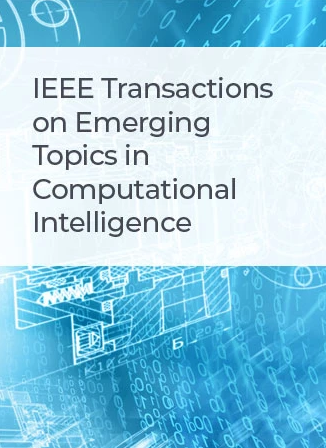GAA: Ghost Adversarial Attack for Object Tracking
IF 5.3
3区 计算机科学
Q1 COMPUTER SCIENCE, ARTIFICIAL INTELLIGENCE
IEEE Transactions on Emerging Topics in Computational Intelligence
Pub Date : 2024-03-18
DOI:10.1109/TETCI.2024.3369403
引用次数: 0
Abstract
Adversarial attack of convolutional neural networks (CNN) is a technique for deceiving models with perturbations, which provides a way to evaluate the robustness of models. Adversarial attack research has primarily focused on single images. However, videos are more widely used. The existing attack methods generally require iterative optimization on different video sequences with high time-consuming. In this paper, we propose a simple and effective approach for attacking video sequences, called Ghost Adversarial Attack (GAA), to greatly degrade the tracking performance of the state-of-the-art (SOTA) CNN-based trackers with the minimum ghost perturbations. Considering the timeliness of the attack, we only generate the ghost adversarial example once with a novel ghost-generator and use a less computable attack way in subsequent frames. The ghost-generator is used to extract the target region and generate the indistinguishable ghost noise of the target, hence misleading the tracker. Moreover, we propose a novel combined loss that includes the content loss, the ghost loss, and the transferred-fixed loss, which are used in different parts of the proposed method. The combined loss can help to generate similar adversarial examples with slight noises, like a ghost of the real target. Experiments were conducted on six benchmark datasets (UAV123, UAV20L, NFS, LaSOT, OTB50, and OTB100). The experimental results indicate that the ghost adversarial examples produced by GAA are well stealthy while remaining effective in fooling SOTA trackers with high transferability. The GAA can reduce the tracking success rate by an average of 66.6% and the precision rate by an average of 68.3%.GAA:用于物体追踪的幽灵对抗攻击
对卷积神经网络(CNN)的对抗性攻击是一种利用扰动欺骗模型的技术,它为评估模型的鲁棒性提供了一种方法。对抗性攻击研究主要集中在单一图像上。然而,视频的应用更为广泛。现有的攻击方法一般需要对不同的视频序列进行迭代优化,耗时较长。在本文中,我们提出了一种简单有效的视频序列攻击方法,称为鬼影对抗攻击(GAA),以最小的鬼影扰动大大降低基于 CNN 的最先进(SOTA)跟踪器的跟踪性能。考虑到攻击的及时性,我们只使用新型鬼影生成器生成一次鬼影对抗示例,并在后续帧中使用可计算性较低的攻击方式。鬼影生成器用于提取目标区域并生成目标的不可分辨鬼影噪声,从而误导跟踪器。此外,我们还提出了一种新颖的组合损耗,其中包括内容损耗、鬼影损耗和转移固定损耗。组合损失有助于生成具有轻微噪声的类似对抗示例,如真实目标的幽灵。实验在六个基准数据集(UAV123、UAV20L、NFS、LaSOT、OTB50 和 OTB100)上进行。实验结果表明,GAA 生成的幽灵对抗示例具有很好的隐蔽性,同时还能有效地欺骗 SOTA 跟踪器,具有很高的可移植性。GAA 可以将跟踪成功率平均降低 66.6%,精确率平均降低 68.3%。
本文章由计算机程序翻译,如有差异,请以英文原文为准。
求助全文
约1分钟内获得全文
求助全文
来源期刊

IEEE Transactions on Emerging Topics in Computational Intelligence
Mathematics-Control and Optimization
CiteScore
10.30
自引率
7.50%
发文量
147
期刊介绍:
The IEEE Transactions on Emerging Topics in Computational Intelligence (TETCI) publishes original articles on emerging aspects of computational intelligence, including theory, applications, and surveys.
TETCI is an electronics only publication. TETCI publishes six issues per year.
Authors are encouraged to submit manuscripts in any emerging topic in computational intelligence, especially nature-inspired computing topics not covered by other IEEE Computational Intelligence Society journals. A few such illustrative examples are glial cell networks, computational neuroscience, Brain Computer Interface, ambient intelligence, non-fuzzy computing with words, artificial life, cultural learning, artificial endocrine networks, social reasoning, artificial hormone networks, computational intelligence for the IoT and Smart-X technologies.
文献相关原料
| 公司名称 | 产品信息 | 采购帮参考价格 |
|---|
 求助内容:
求助内容: 应助结果提醒方式:
应助结果提醒方式:


